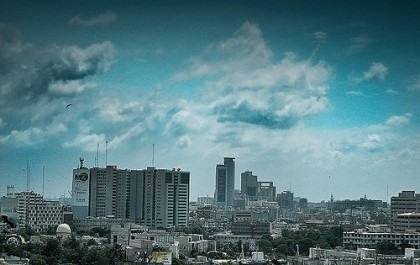Em 5 de fevereiro de 2010, dois ataques suicidas atingiram a cidade metropolitana de Carachi, matando 15 pessoas e deixando 70 feridos. O primeiro ataque era principalmente direcionado aos peregrinos xiitas que viajavam para participar da procissão de Muharram. A segunda explosão ocorreu fora do departamento de emergência do hospital Jinnah, para onde os feridos estavam sendo deslocados. Os ataques aconteceram 40 dias após o atentado de Ashura que matou mais de 40 pessoas. Infelizmente, Karachi tem um histórico de violências de natureza étnica e sectária.
No meu próprio blog recordei e condenei o retorno da violência em Carachi:
The aftermath of Monday’s suicide bombing – the widespread rioting and burning – are characteristic of the kind of reaction and vandalism that follow sectarian attacks. Soon after the blast, riots broke out in various parts of the city. It appears that there was absolutely no damage control by security forces at that point. As a result, hundreds of shops were set ablaze, and at some point on late Monday night, it seemed as if the entire business district was at risk. Attacks of such nature have almost always been accompanied by widespread tensions. As riots continue, more questions are being raised on the role of the security personnel and their absence as widespread vandalism continues. It is evident that the attack doesn’t only target a specific sect. It is an attack to terrorise the people of Karachi and embroil them in conflict, thereby damaging the country’s economic hub.
Kalsoom Lakhani em CHUP – Changing Up Pakistan [en] condenou a série de ataques a mulçumanos xiitas e questionou a situação da lei e da ordem no país:
We may not be entirely certain who was responsible for today’s attacks, but it is nevertheless horrific that they could happen at all. If all three cities were placed on red alert yesterday, was there not more that could be done to prevent today’s death? The targeting of Shia pilgrims as well as a hospital is not only tragic, but frankly also sickening. Is nowhere in Pakistan safe or untouched anymore?
Em um abrangente post publicado anteriormente no blog, Kalsoom deu uma visão sobre a história de violência em Carachi. Segundo Dawn mais de 34 pessoas perderam suas vidas em violência étnica em várias partes da cidade em abril do ano passado. O público em geral está consternado com a violência generalizada e a incapacidade das autoridades em estabelecer o controle.
Outra blogueira, Farheen Ali, compartilha sua preocupação sobre o agravamento da situação da cidade e a inatividade das autoridades em um post intitulado “Imbatível onda de assassinatos em Carachi” [en].
Following the violence, government has imposed section 144 across the Orangi Town. And after imposing the sections Government feels liberated from all the accountability and blame.
Adil Najam no All Things Pakistan [en] exige que Carachi deve ser feita uma zona livre de armas:
Even as violence of all forms spirals all over the country and even as, in the wake of the recent violence in there, politicians from all parties call for Karachi to be declared a “weapons free” zone (rightly!), it turns out that politicians and parliamentarians from all parties are busy distributing licenses for all forms of prohibited weapons as if these were kids candy.
Considerando a recente agitação em Carachi, o governo precisa tomar medidas imediatas para pôr um fim à violência. No entanto, as notícias sugerem que as autoridades estão ocupadas decidindo conflitos internos em vez de abordar as questões vitais.







